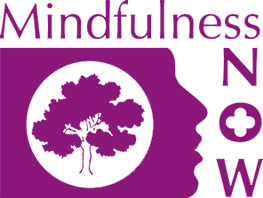Mindfulness and Stillness
Mindfulness is often seen as an activity in which stillness takes precedence. Perhaps, however, there might be two ways of looking at this stillness.
On the one hand, physical stillness is a very calming thing. Allowing our body to have some degree of quietude allows our minds to become more still too. This is the prevalent way of ‘being’ during formal meditations – gently taking up a sitting or lying position that is relatively easy to maintain for at least the next few minutes, if not an hour or more. Although we might experience some degree of discomfort during that time, for the most part, we can bring our awareness to whatever we choose, whether inside of us (thoughts, feelings, sensations) or outside of us (sounds, situations). During a guided formal meditation, our attention is often brought back to a focus by the one who is leading the session. Often, we find it easier to be still when someone is guiding us.
This kind of still meditation is a method we can use in order to become more mindful of the present moment.
Allowing Stillness into Our Lives
Sometimes, however, we can struggle with allowing this stillness into our busy lives. We are so used to being on the go all the time that being anything like still and quiet seems completely alien to us, and often impossible when we have schedules to run to. We have become human doings instead of human beings! Having to be on the go all the time.
However, there are also ways in which, as we allow mindfulness into our lives and practice it more and more regularly, we can train ourselves to recognise this stillness even amidst the busiest and most hectic of times.
Improved Cognitive Understanding
We learn that we can recognise our thought processes more and more, and not become so entwined in reacting to things to which we don’t need to react. With this kind of cognitive understanding, we learn that our thoughts are not who we are – they are simply our thoughts. And, as our thoughts change from moment to moment, so too can our approach to any situation. Could we not recognise that, perhaps (at least sometimes) what our thoughts make of the world are to do with a way of thinking that is a little more negative than what reality is actually showing us? And when we acknowledge this, does that not put us in rather more control of any given situation than we’d previously thought?
Visualising Our Thoughts
It is sometimes said that if we see our thoughts high up above us – for example, floating like clouds across the sky, or printed onto helium-filled balloons in our imagination, then it might be easier to put a little distance between who we are and those thoughts.
In a more formal setting, we can picture the embodiment of our everyday experience as a lake – the surface often gets disturbed by things that happen to us but we can also imagine the vast body of water below the surface which remains completely still and peaceful, unperturbed by any external events.
It is this stillness that is always within us, somewhere deep down. Somewhere, perhaps, that we often find difficult to acknowledge but is always there none-the-less.
Mindfulness can help us to acknowledge that simple stillness within.
Rachel Broomfield, Mindfulness teacher and trainer






